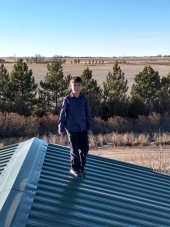
 3
3




Clay, shade, neighbor’s Norway maples.....we’ll work it out.
 3
3




A human being should be able to change a diaper, plan an invasion, butcher a hog, conn a ship, design a building, write a sonnet, balance accounts, build a wall, set a bone, comfort the dying, take orders, give orders, cooperate, act alone, solve equations, analyze a new problem, pitch manure, program a computer, cook a tasty meal, fight efficiently, die gallantly. Specialization is for insects.
-Robert A. Heinlein
 2
2




Clay, shade, neighbor’s Norway maples.....we’ll work it out.




It is better to be kind than right.




A human being should be able to change a diaper, plan an invasion, butcher a hog, conn a ship, design a building, write a sonnet, balance accounts, build a wall, set a bone, comfort the dying, take orders, give orders, cooperate, act alone, solve equations, analyze a new problem, pitch manure, program a computer, cook a tasty meal, fight efficiently, die gallantly. Specialization is for insects.
-Robert A. Heinlein




 2
2




Clay, shade, neighbor’s Norway maples.....we’ll work it out.
 3
3




Clay, shade, neighbor’s Norway maples.....we’ll work it out.

| I agree. Here's the link: http://stoves2.com |






